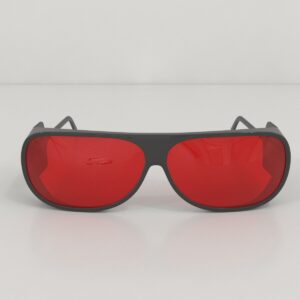$990.00
Explore the nuances of ant behavior with the Visual Discrimination Y-Maze, specially designed to investigate how ants perceive and respond to visual cues.
This Y-Maze configuration provides a straightforward dual-choice setup for observing foraging behaviors influenced by various visual stimuli. It features a central start arm that diverges into two choice arms, allowing placement of cues either within these arms or at their terminations.
Discover the Ant Visual Discrimination Y-Maze through Mazeengineers today.

MazeEngineers empowers preclinical neuroscience research with meticulously designed, customizable behavioral apparatuses. From manual classic mazes to fully automated smart systems, we provide the tools scientists need to capture high-quality, reproducible data for studies on learning, memory, anxiety, and depression.



Features |
Length of arms of maze: 20cm |
Width of arms of maze: 4cm |
Height of arms of maze: 4cm |
Angle between two choice arms: 1200 |

The Ant Visual Discrimination Y-Maze is an important tool for examining visual discrimination in ants. These insects, which exhibit remarkable ecological diversity, inhabit a wide range of environments and employ various strategies like path integration and environmental cues for navigation (Schwarz & Cheng, 2010). In addition to pheromone trails, visual cues are vital for their navigation.
Visual discrimination tests, akin to the Visual Discrimination Chamber used for rodent studies, are widely utilized to assess visual learning and memory-related behaviors. The Ant Visual Discrimination Y-Maze offers a straightforward two-choice setup to evaluate foraging behaviors under different visual cues. This apparatus includes a long start arm that splits into two choice arms, forming a Y-Maze where cues can be placed within or at the ends of the choice arms. Research indicates that visual learning is influenced by the color, shape, and size of the cues, as well as the specific species and caste of the ants being studied (Fernandes, Buckley, & Nevin, 2017; Cammaerts, 2013). The Y-Maze is designed to accommodate large visual cues and other non-2D visual stimuli. Additionally, it can be used to investigate how the morphological variations in the eyes of different ant species impact visual perception and learning, as well as to evaluate choice behaviors.
Similar Y-mazes used for studying choice behaviors in various animals include the Honeybee Y-maze, the Bumblebee Y-maze, the Bat Y-maze, and the Zebrafish Y-maze.
The Ant Visual Discrimination Y-Maze is designed in a Y shape, constructed from black opaque acrylic and mounted on a white Plexiglas plate. The maze features a straight start arm that divides into two choice arms. Each of the three arms measures 20 cm in length, 4 cm in width, and 4 cm in height. The choice arms are connected at a 120-degree angle at the decision point. The maze is equipped to hold both small-field and large-field visual stimuli. Small-field stimuli can be positioned 4.5 cm from the decision point, while large-field stimuli can be placed 20 cm away. The visual stimuli used in the maze include 2D patterns and LED lights.
Clean the maze after every trial. Appropriately light the maze. A tracking and recording system such as the Noldus Ethovision XT can be used to assist with observations.
Begin the pre-training phase without introducing visual stimuli. Place food rewards at the start arm, the decision point, and in both lateral arms. Position the subject in the starting arm and allow it to explore the maze freely. Choose subjects that return to the setup within 3-4 minutes to proceed to the training phase.
Position the visual cues in the appropriate arms along with their associated reinforcement stimuli (reward and punishment). Begin each trial by placing the subject in the starting arm of the maze and observe its choice behaviors. Randomly alternate the pairing of stimuli between the arms of the maze between trials. Perform 18 consecutive trials for each subject, with an interval of 2-4 minutes between each trial.
Yilmaz, Dyer, Rössler, and Spaethe (2017) explored the innate color preferences, learning, and memory retention of Camponotus blandus. The ants were tasked with discriminating between different monochromatic light stimuli [365 nm (ultraviolet, UV), 450 nm (blue), and 528 nm (green)] using the Ant Visual Discrimination Y-Maze. These spectral stimuli were provided by three LEDs mounted on a UV-transparent Plexiglas plate connected to a power supply. During each trial, a reward of 3 µl of sucrose solution was given, while water accompanied the distractor stimulus. Initially, the ants’ innate color preferences were assessed by presenting them with pairs of monochromatic lights at varying intensities. The findings showed a strong innate preference for UV over blue and green.
Subsequent color learning and discrimination tests involved two different learning groups. In the first group, the ants had to discriminate between two of the three monochromatic light stimuli, relying solely on chromatic information regardless of intensity changes. Despite their strong UV preference, the ants learned to discriminate between UV and either blue or green stimuli but failed to distinguish between blue and green when presented together.
In the second group, the ants were tested to determine if they had learned the rewarded association or simply to avoid UV. This involved replacing the unrewarded UV stimulus with a novel blue or green stimulus. The ants did not choose the correct arm when UV was replaced but opted for the novel stimulus when presented alongside UV, indicating avoidance of UV rather than a learned preference for the rewarded stimulus. Memory tests revealed that the ants’ learning performance during training and their retention of the learned association over time did not significantly differ.
Yilmaz, Aksoy, Camlitepe, and Giurfa (2014) examined visual pattern discrimination in Formica cunicularia and Camponotus aethiops using the Ant Visual Discrimination Y-Maze. Both species possess apposition eyes but differ in the characteristics of their visual environments. The experiment tested their ability to discriminate between two small-field and two large-field visual stimuli. The small-field stimuli consisted of two small black triangles, one pointing upward and the other downward, set against a white background. The large-field stimuli involved two black-and-white gratings, one horizontal and the other vertical, extending beyond the back walls of the maze.
A 2 μl sucrose solution was provided as a reward for the correct visual stimulus, while a 5% quinine solution (2 μl) was given with the incorrect visual stimulus. The results showed that F. cunicularia learned to differentiate between the upward and downward pointing triangles, whereas C. aethiops could not distinguish between these small-field stimuli.
For the large-field stimuli, the horizontal and vertical gratings were pseudo-randomly shifted up and down or left and right across trials. F. cunicularia successfully learned to discriminate between the two gratings regardless of their position. Conversely, C. aethiops demonstrated variable performance, showing better discrimination learning when the horizontal grating was rewarded.
Aksoy and Camlitepe (2012) studied the behavioral responses of Formica cunicularia foragers to monochromatic spectral stimuli using the Ant Visual Discrimination Y-Maze. Each choice arm of the maze ended in a clear Perspex feeding box, from which the ants could not escape due to a fluon barrier. Lightboxes attached to the back of the feeding box delivered the spectral stimuli to the maze. The ants’ ability to discriminate between different wavelengths was tested by pairing 370 nm with 540 nm, 440 nm with 540 nm, 540 nm with 370 nm, and 640 nm with 540 nm.
The results showed that the ants could distinguish between 370 nm and 540 nm in both control and critical tests. They also discriminated between 640 nm and 540 nm in the control test but not in the critical test. However, the ants could not distinguish between 440 nm and 540 nm. The next phase of testing involved the same wavelengths at different intensities. In control tests, the intensity of the unrewarding stimulus was reduced by 2 log units. The ants could discriminate the 2-log unit intensity difference for all wavelengths except 640 nm. In critical tests, the 2-log unit difference was reduced to 1-log unit by increasing the intensity of the unrewarding stimulus. The ants failed to discriminate all wavelength pairs except 440 nm.
Additionally, the researchers tested the ants’ responses to decreasing intensities of different wavelengths on an orientation platform, which consisted of a circular plastic vessel (170 mm diameter) connected to the nest by a pipe. The ants were trained with 370, 440, 540, and 640 nm wavelengths. All wavelengths elicited a significant homeward orientation response from the foragers. In critical tests, when the intensity was reduced, the foragers continued to orient to 370 and 540 nm with 1-log and 2-log unit decreases, but they dispersed randomly below these values. The significant orientation response to 440 and 640 nm disappeared when their intensities were reduced by 1-log unit.
The following can be observed on the Ant Visual Discrimination Y-Maze:
The Ant Visual Discrimination Y-Maze is an effective tool for studying how ants visually discriminate between different stimuli. These stimuli can vary in color, size, shape, or pattern, with larger visual stimuli extending beyond the maze’s back walls. The testing procedure requires minimal training for the subjects, making it efficient and quick. Beyond conditioned learning protocols, the maze can also be used to assess various other behaviors, including social interactions, reproductive behaviors, and preference behaviors.
The subject’s motivation and its appetitive condition can influence task performance. In tasks involving appetitive stimuli, variations in the quantity and quality of the reward can impact results. Additionally, previous trials or unintended stimuli may interfere with task performance. Factors such as age, gender, and strain of the subject can also affect how well the task is performed.
There are no questions yet. Be the first to ask a question about this product.